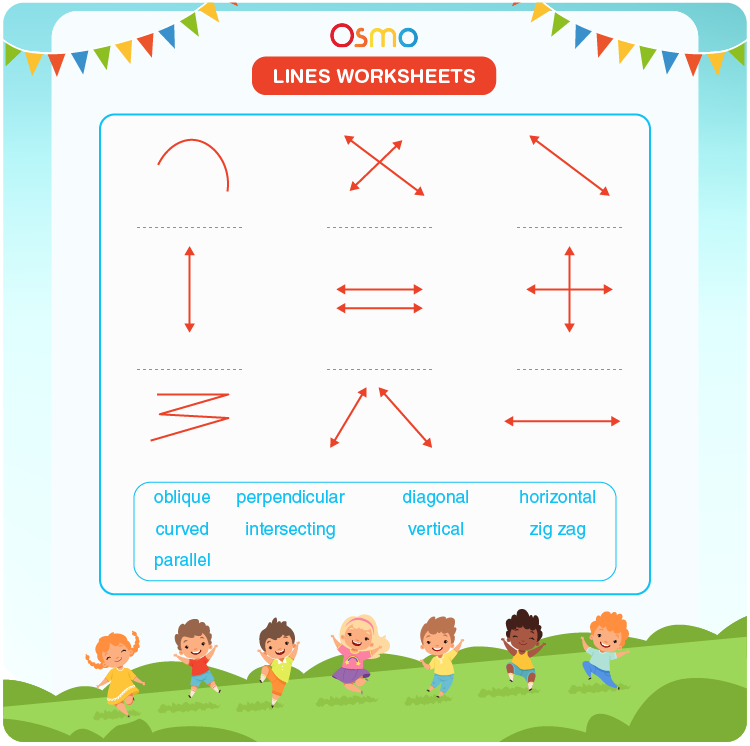- Free Printable Lines Worksheets
- Types of Lines Worksheets for Kids
- Different Types of Lines Worksheets for Kids
- Benefits of Lines Worksheets for Kids
- Frequently Asked Questions on Lines Worksheets
Kids must learn to differentiate between lines for better learning outcomes. In this regard, worksheets play a crucial role in teaching children lines and their properties. These worksheets for kids consist of exercises that improve their skills of identification, drawing, tracing, etc.
Check math worksheets related articles:
Free Printable Lines Worksheets
Kids can learn about the lines based on their geometrical properties with the help of worksheets. To create an entertaining learning environment for children, you can plan math activities so that they will engage themselves in practicing worksheets. Some lines worksheets for kids are given below:
Write the names of the types of lines on the worksheet

Trace the following lines on the worksheet given below

Types of Lines Worksheets for Kids
The types of lines worksheets for kids are mentioned below:
- Identify the lines worksheets: In this worksheet, kids need to identify the different types of lines, such as parallel, perpendicular, intersecting, curved, zig-zag lines, etc. This worksheet helps them learn the recognition of lines for an effective learning experience.
- Choose the correct options: Kids need to identify and choose the correct answers from the given options on the worksheet.
- Label the lines worksheets: Kids need to write the names of the lines on the worksheet. This worksheet helps them learn the spelling of different lines correctly.
- Guess the real-life objects: In this worksheet, you can ask kids to guess the objects that resemble the lines. This worksheet helps them connect the real-life examples with the lines for a better understanding of the concept.
Different Types of Lines
Lines are one-dimensional figures with points extended in the opposite direction infinitely. There is no end to the line. The different types of lines are mentioned below:
- Horizontal lines: The lines move from left to right and vice versa.
- Vertical lines: Lines move from bottom to top and vice versa.
- Parallel lines: Lines do not interact at a point and are parallel to each other.
- Perpendicular lines: Two intersecting lines meeting at 90 degrees.
- Intersecting lines: Two lines meeting at a point.
Check math-related articles:
Benefits of Lines Worksheets for Kids
The benefits of lines worksheets for kids are mentioned below:
- It helps children understand the difference between various types of lines for a better learning experience.
- It develops cognitive and fine motor skills in children.
- It improves hand-eye coordination skills by practicing worksheets.
- It engages children to concentrate on learning lines and their properties that differentiate them from each other.
- It boosts the confidence of children to enjoy their learning process.
- It increases the academic progress of children and enables them to secure good marks in the topics related to lines.
We hope this article on lines worksheets for kids was useful to you. To learn about activities, worksheets and games, explore worksheets for kids, math for kids, puzzles for kids, kids learning sections at Osmo.
Frequently Asked Questions on Lines Worksheets
What are lines worksheets?
Lines worksheets for kids are an excellent tool to learn, recognize, draw and write the names of different types of lines, such as vertical, horizontal, perpendicular and parallel lines creatively.
What are the benefits of line worksheets?
The benefits of line worksheets for kids are that it enables them to understand and learn about the concept of lines in solving geometric problems. Most importantly, it helps them develop cognitive and fine motor skills while practicing worksheets for better academic performance.